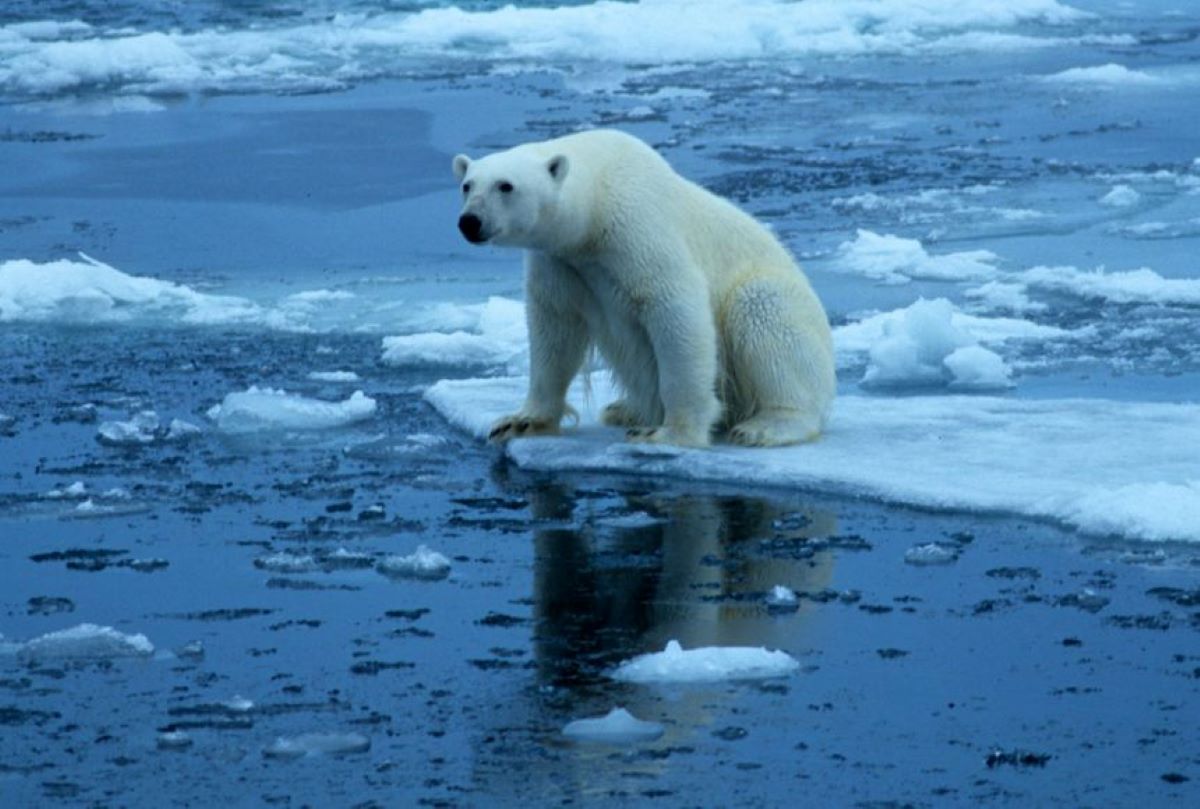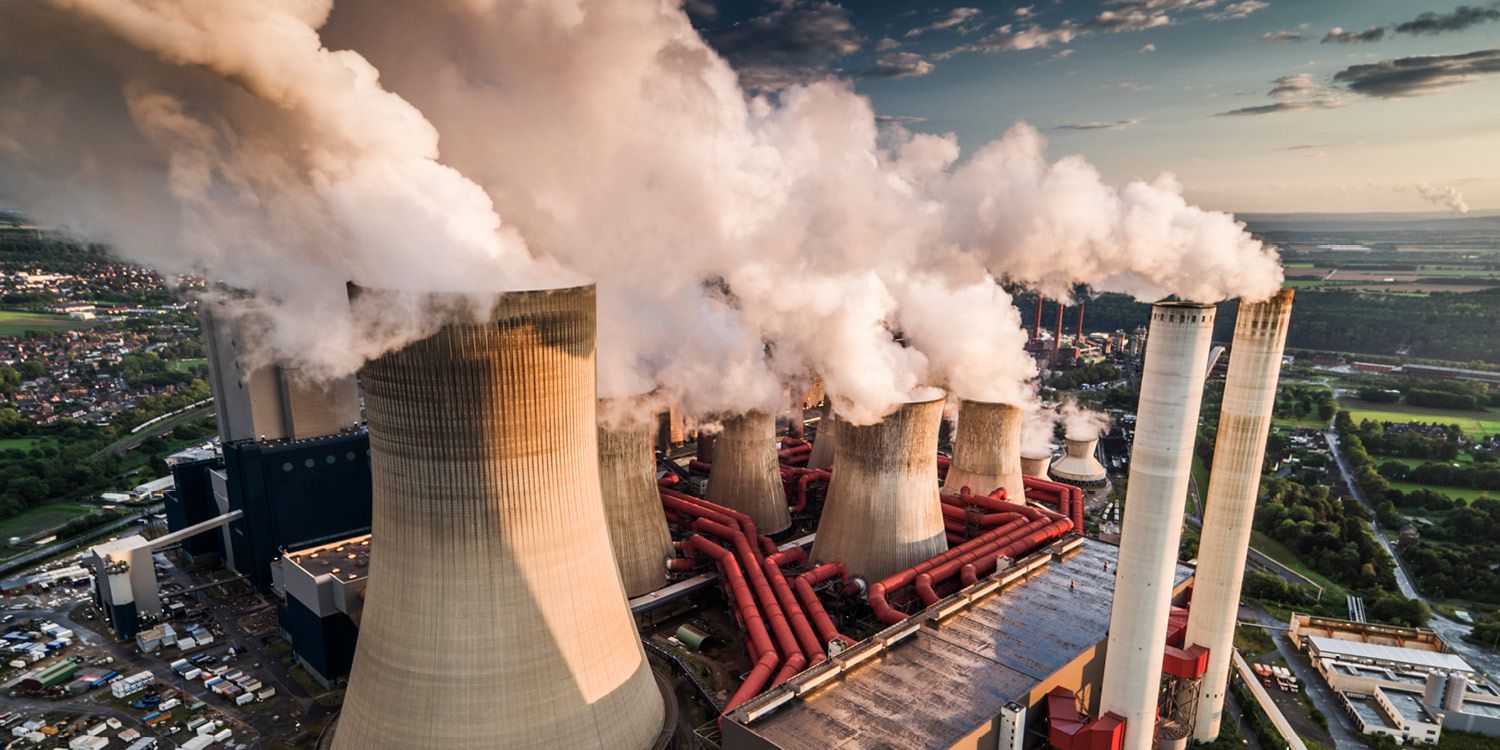Home>Gardening Tips and Tricks>Eco-Friendly Gardening>Which Describes The Greenhouse Effect Brainly


Eco-Friendly Gardening
Which Describes The Greenhouse Effect Brainly
Modified: February 8, 2024
Discover the impact of the greenhouse effect on eco-friendly gardening and learn how to cultivate a sustainable garden that benefits both the environment and your plants.
(Many of the links in this article redirect to a specific reviewed product. Your purchase of these products through affiliate links helps to generate commission for Chicagolandgardening.com, at no extra cost. Learn more)
Table of Contents
Introduction
Welcome to the world of eco-friendly gardening! As our society becomes more conscious of the impact of our actions on the environment, many people are turning to eco-friendly gardening practices to create beautiful, sustainable, and environmentally-friendly gardens. Eco-friendly gardening is a holistic approach that focuses on preserving and nurturing the natural ecosystem within your garden, while minimizing harm to the environment. By incorporating eco-friendly gardening principles, you can reduce your carbon footprint, conserve water, promote biodiversity, and create a thriving garden that is in harmony with nature.
Eco-friendly gardening goes beyond simply using organic fertilizers and avoiding harmful pesticides. It encompasses a range of practices that work together to create a sustainable and environmentally-conscious garden. These practices include water conservation, soil management, composting, native plant selection, and attracting beneficial wildlife. By implementing these practices, you can not only create a beautiful and thriving garden but also contribute to the larger goal of protecting and preserving the planet for future generations.
In this comprehensive guide, we will explore the various aspects of eco-friendly gardening and delve into the techniques and strategies that can help you create a truly sustainable garden. Whether you are a seasoned gardener looking to transition to more eco-friendly practices or a beginner just starting out, this guide will provide you with the knowledge and tools you need to embark on an eco-friendly gardening journey. So, let’s dive in and discover how you can create a greener and more sustainable garden!
Definition of the Greenhouse Effect
The greenhouse effect is a natural process that occurs in the Earth’s atmosphere, maintaining a balance of heat and energy that supports life on our planet. It is named after the way a greenhouse traps heat, creating a warm and controlled environment for plants to grow. In the same way, the Earth’s atmosphere acts as a “greenhouse,” trapping heat from the sun, which is essential for maintaining suitable temperatures for life to exist.
The greenhouse effect is primarily caused by the presence of greenhouse gases in the Earth’s atmosphere. These gases include carbon dioxide (CO2), methane (CH4), nitrous oxide (N2O), and fluorinated gases. When sunlight reaches the Earth’s surface, it is absorbed and then radiated back into the atmosphere as heat. Greenhouse gases trap some of this heat, preventing it from escaping back into space, and causing the Earth’s temperature to rise.
This natural process is essential for our planet’s habitability. Without the greenhouse effect, the Earth’s average temperature would be much colder, making it inhospitable for life as we know it. However, human activities, such as burning fossil fuels, deforestation, and industrial processes, have significantly increased the concentration of greenhouse gases in the atmosphere. This excess of greenhouse gases intensifies the greenhouse effect and leads to global warming, resulting in various environmental and climatic changes.
The greenhouse effect is a complex phenomenon, and scientists continue to study its intricacies to better understand its impact on the Earth’s climate. While the greenhouse effect is a natural occurrence, it is the amplification of this effect due to human activities that has raised concerns about the long-term sustainability of our planet.
Explanation of the Greenhouse Effect Process
The greenhouse effect process begins with the Sun radiating energy towards the Earth. This energy, primarily in the form of sunlight, passes through the Earth’s atmosphere and reaches the Earth’s surface. When the sunlight hits the Earth’s surface, it is absorbed and converted into thermal energy, causing the surface to warm up.
As the Earth’s surface warms up, it radiates heat back into the atmosphere in the form of infrared radiation. This emitted radiation is then absorbed by greenhouse gases present in the atmosphere, such as carbon dioxide, methane, nitrous oxide, and water vapor. These greenhouse gases trap some of the heat and prevent it from escaping back into space, acting like a blanket around the Earth. This trapped heat keeps the atmosphere warm and contributes to the overall temperature of the planet.
However, the greenhouse effect is a delicate balance. In a natural state, the Earth’s atmosphere contains a certain concentration of greenhouse gases that regulate the amount of heat trapped. Human activities, particularly the burning of fossil fuels and deforestation, have significantly increased the concentration of greenhouse gases in the atmosphere. This excess of greenhouse gases enhances the greenhouse effect, leading to global warming and climate change.
The enhanced greenhouse effect is causing several alarming consequences. As the temperature rises, it can lead to the melting of glaciers and polar ice caps, resulting in rising sea levels. Changes in weather patterns, increased frequency and severity of extreme weather events, and disruptions in ecosystems are also observed as a result of the enhanced greenhouse effect.
It is essential to understand that the greenhouse effect is a natural process that is necessary for life on Earth. It helps maintain a stable and habitable climate. However, the rapid increase in greenhouse gas emissions caused by human activities is leading to an imbalance in the natural system, with far-reaching consequences for our planet.
Role of Greenhouse Gases in the Greenhouse Effect
Greenhouse gases play a vital role in the greenhouse effect and its impact on the Earth’s climate. These gases are responsible for trapping heat in the atmosphere, contributing to the overall warming of our planet. The main greenhouse gases include carbon dioxide (CO2), methane (CH4), nitrous oxide (N2O), and fluorinated gases.
Carbon dioxide (CO2) is the most significant greenhouse gas, accounting for approximately 76% of the greenhouse effect. It is released into the atmosphere through natural processes like respiration and volcanic activity, as well as human activities such as burning fossil fuels and deforestation. The increased concentration of CO2 in the atmosphere has led to a significant enhancement of the greenhouse effect, intensifying global warming.
Methane (CH4) is another potent greenhouse gas with a warming potential much higher than that of carbon dioxide. It is produced by natural sources like wetlands and the digestive systems of animals. Human activities also contribute to methane emissions through activities such as agriculture, coal mining, and the production and transport of natural gas and oil. Methane emissions have a short lifespan in the atmosphere but can have a significant impact on the greenhouse effect during that time.
Nitrous oxide (N2O) is a greenhouse gas produced by natural processes like soil bacteria and volcanic activity, as well as human activities such as agriculture and industrial processes. It has a much higher warming potential than carbon dioxide and can remain in the atmosphere for an extended period, contributing to the accumulation of greenhouse gases and global warming.
Fluorinated gases, including hydrofluorocarbons (HFCs) and sulfur hexafluoride (SF6), are synthetic greenhouse gases used in various industrial applications. Although they are present in smaller quantities compared to carbon dioxide and methane, they have an incredibly high warming potential. Efforts are being made to reduce the emission of fluorinated gases through international agreements and regulations.
The role of greenhouse gases in the greenhouse effect is essential for maintaining a stable climate on Earth. However, the increased concentration of these gases due to human activities has disrupted this balance, leading to global warming and climate change. It is crucial to reduce greenhouse gas emissions and find sustainable alternatives to mitigate the adverse effects of the greenhouse effect and protect our planet for future generations.
Impact of Human Activities on the Greenhouse Effect
Human activities have had a significant impact on the greenhouse effect, primarily through the emission of greenhouse gases. Over the past century, the burning of fossil fuels, deforestation, industrial processes, and intensive agriculture have significantly increased the concentration of greenhouse gases in the Earth’s atmosphere, leading to an enhanced greenhouse effect and global warming.
The burning of fossil fuels, such as coal, oil, and natural gas, for energy production and transportation is one of the major contributors to greenhouse gas emissions. When these fuels are burned, carbon dioxide (CO2) is released into the atmosphere, adding to the greenhouse gas concentration. The reliance on fossil fuels as the primary source of energy has led to a sharp increase in CO2 emissions and has been a major driver of climate change.
Deforestation is another significant human activity that contributes to the greenhouse effect. Forests act as natural carbon sinks by absorbing and storing carbon dioxide. However, large-scale deforestation, primarily for agriculture, urbanization, and the production of timber and paper, has led to the release of vast amounts of stored carbon into the atmosphere. This not only reduces the Earth’s capacity to absorb CO2 but also contributes to increased greenhouse gas concentrations.
Industrial processes, such as manufacturing, mining, and construction, are also significant sources of greenhouse gas emissions. These activities release not only carbon dioxide but also other greenhouse gases like methane and nitrous oxide. Additionally, the production and use of certain chemicals, such as chlorofluorocarbons (CFCs), are responsible for depleting the ozone layer, further exacerbating the greenhouse effect.
Agriculture, particularly livestock farming and rice cultivation, is a major source of methane emissions. Ruminant animals like cows and sheep produce methane during digestion, while flooded rice fields emit methane due to anaerobic decomposition. These agricultural practices contribute to the overall greenhouse gas emissions and global warming.
The impact of human activities on the greenhouse effect has resulted in significant climatic changes and environmental consequences. Increased global temperatures have led to the melting of glaciers, rising sea levels, altered weather patterns, and an increased frequency of extreme weather events like hurricanes and heatwaves. These changes have profound implications for ecosystems, biodiversity, and human populations, including threats to food security, water availability, and the overall stability of our planet.
Addressing the impact of human activities on the greenhouse effect is crucial for mitigating climate change. Transitioning to renewable sources of energy, promoting sustainable land management practices, adopting eco-friendly industrial processes, and implementing climate-smart agricultural techniques are some of the measures that can help reduce greenhouse gas emissions and alleviate the adverse effects on the environment.
Consequences of the Greenhouse Effect
The consequences of the greenhouse effect and global warming are becoming increasingly evident in various aspects of our environment and daily lives. The rise in global temperatures as a result of the enhanced greenhouse effect has far-reaching effects on ecosystems, weather patterns, sea levels, and human health.
One of the most visible consequences of global warming is the melting of glaciers and polar ice caps. As the Earth’s temperature rises, these ice formations are rapidly shrinking, contributing to the rising sea levels. This phenomenon poses a significant threat to coastal communities and low-lying areas, increasing the risk of flooding and the potential loss of land.
Changes in weather patterns are another consequence of the greenhouse effect. Rising temperatures lead to more frequent and intense heatwaves, as well as changes in rainfall patterns. Some regions may experience an increase in drought conditions, while others may face more frequent and severe storms. These shifts in weather patterns can disrupt ecosystems, agriculture, and water resources, affecting food production, human health, and economic stability.
The loss of biodiversity is a significant consequence of the greenhouse effect. Climate change disrupts ecosystems, affecting the availability and suitability of habitats for various species. Changing temperatures and precipitation patterns can alter the timing of migration, breeding, and flowering, leading to mismatches in interactions between species. This can have cascading effects on entire ecosystems and lead to the decline or extinction of certain species.
Human health is also impacted by the greenhouse effect. Heat-related illnesses and deaths increase during heatwaves, especially among vulnerable populations such as the elderly and those with pre-existing health conditions. Changing weather patterns can also affect the prevalence and distribution of diseases, including vector-borne diseases like malaria and dengue fever.
The consequences of the greenhouse effect extend beyond the natural environment and impact socioeconomic systems. Changes in weather patterns and the availability of natural resources can disrupt agriculture, leading to decreased crop yields and increased food insecurity. Rising sea levels can displace coastal communities, resulting in population migration and increased pressure on already strained infrastructure and resources.
It is important to note that the consequences of the greenhouse effect are not evenly distributed. Developing countries, with limited resources and infrastructure, are often more vulnerable to the impacts of climate change. This further exacerbates social and economic inequalities.
Addressing and mitigating the consequences of the greenhouse effect requires a collective effort and global action. Efforts to reduce greenhouse gas emissions, promote sustainable practices, and adapt to the changing climate are crucial for minimizing the long-term impacts and ensuring a more resilient future for our planet.
Measures to Mitigate the Greenhouse Effect
Mitigating the greenhouse effect and reducing the impacts of climate change requires collective action at both the individual and societal levels. Here are some key measures that can help mitigate the greenhouse effect:
- Reducing greenhouse gas emissions: The most effective way to mitigate the greenhouse effect is to reduce the emission of greenhouse gases. This can be achieved by transitioning to renewable sources of energy, such as solar and wind power, and phasing out the use of fossil fuels. Promoting energy efficiency in homes, buildings, and transportation systems can also significantly reduce greenhouse gas emissions.
- Conserving energy and practicing energy efficiency: Conserving energy reduces the demand for fossil fuel-based power generation, thereby lowering greenhouse gas emissions. Simple steps like turning off lights when not in use, using energy-efficient appliances, and insulating homes can make a significant difference. Additionally, adopting energy-efficient transportation options like carpooling, using public transport, or cycling can help reduce emissions.
- Promoting sustainable agriculture: Agriculture is a significant contributor to greenhouse gas emissions due to practices like deforestation, use of synthetic fertilizers, and methane emissions from livestock. Transitioning to sustainable farming practices, such as organic farming, agroforestry, and precision agriculture, can reduce greenhouse gas emissions and promote soil health.
- Protecting and restoring ecosystems: Forests, wetlands, and other natural ecosystems act as carbon sinks, absorbing and storing carbon dioxide. Protecting existing forests and restoring degraded ecosystems can help sequester carbon and reduce greenhouse gas concentrations in the atmosphere. Additionally, reforestation efforts can enhance biodiversity, improve air quality, and mitigate climate change.
- Adopting sustainable land management practices: Soil management techniques like composting, mulching, and crop rotation can enhance soil fertility, sequester carbon, and reduce the need for synthetic fertilizers. Implementing sustainable land management practices can also help conserve water, prevent soil erosion, and enhance the resilience of agricultural systems to climate change.
- Promoting circular economy and waste reduction: The production, consumption, and disposal of goods contribute to greenhouse gas emissions. Adopting a circular economy approach, which focuses on reducing waste, reusing materials, and recycling, can significantly reduce greenhouse gas emissions associated with resource extraction and waste disposal. Additionally, reducing food waste and composting organic waste can minimize methane emissions from landfills.
- Supporting policy changes and international agreements: Advocacy for policy changes at the local, national, and international levels is crucial for mitigating the greenhouse effect. Supporting initiatives that prioritize renewable energy, carbon pricing mechanisms, and climate-friendly policies can promote systemic change and encourage sustainable practices.
It is important to recognize that individual actions, combined with collective efforts, can make a significant impact in mitigating the greenhouse effect and combating climate change. By adopting these measures and promoting sustainability in our daily lives, we can contribute to a greener and more sustainable future for our planet.
Conclusion
The greenhouse effect is a natural process that is essential for maintaining a habitable climate on Earth. However, the enhanced greenhouse effect caused by human activities has led to global warming and climate change, with far-reaching consequences for our environment, ecosystems, and communities.
It is vital that we take immediate action to mitigate the greenhouse effect and reduce our carbon footprint. By implementing eco-friendly gardening practices, transitioning to renewable energy sources, conserving resources, promoting sustainable land management, and supporting policy changes, we can make a positive impact in the fight against climate change.
Eco-friendly gardening, in particular, allows us to create beautiful, sustainable, and environmentally-conscious gardens. By conserving water, using organic fertilizers, attracting beneficial wildlife, and promoting biodiversity, we can reduce our impact on the environment and create thriving ecosystems within our own backyard.
Collective action is key in addressing the challenges posed by the greenhouse effect. Governments, businesses, communities, and individuals all have a role to play in reducing greenhouse gas emissions, protecting natural resources, and adapting to a changing climate.
By working together, we can create a greener and more sustainable future for ourselves and future generations. Let’s embrace eco-friendly gardening practices, make conscious choices in our daily lives, and advocate for smart environmental policies to combat the greenhouse effect and preserve the beauty and integrity of our planet.



